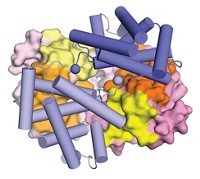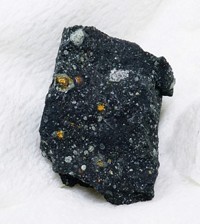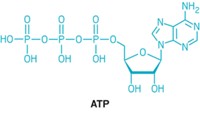Advertisement
Grab your lab coat. Let's get started
Welcome!
Welcome!
Create an account below to get 6 C&EN articles per month, receive newsletters and more - all free.
It seems this is your first time logging in online. Please enter the following information to continue.
As an ACS member you automatically get access to this site. All we need is few more details to create your reading experience.
Not you? Sign in with a different account.
Not you? Sign in with a different account.
ERROR 1
ERROR 1
ERROR 2
ERROR 2
ERROR 2
ERROR 2
ERROR 2
Password and Confirm password must match.
If you have an ACS member number, please enter it here so we can link this account to your membership. (optional)
ERROR 2
ACS values your privacy. By submitting your information, you are gaining access to C&EN and subscribing to our weekly newsletter. We use the information you provide to make your reading experience better, and we will never sell your data to third party members.
Origins Of Life
Amino acids may have stabilized membranes needed for the origin of life
The compounds may have helped stabilize protocells
by Laura Howes
August 24, 2019
| A version of this story appeared in
Volume 97, Issue 33

A chemical conundrum complicates researchers’ understanding of how the first biological cells emerged. Those protocells were most likely formed from fatty acid vesicles serving as membranes. Some researchers have suggested that vesicles, proteins and RNA all formed separately and later joined to make protocells. But while the chemical reactions needed to make proteins and RNA would have relied on salty water and metal ions, those conditions make fatty acid vesicles break apart. Researchers at the University of Washington led by Sarah L. Keller have an explanation. They propose that two components of protocells—their membranes and proteins—cooperated to make them stable even in the presence of ions, potentially enabling protocell protein synthesis (Proc. Natl. Acad. Sci. U.S.A. 2019, DOI: 10.1073/pnas.1900275116). Keller’s team found that when they made protocell-like lipid vesicles in the presence of hydrophilic amino acids such as serine, the cells were stable and didn’t fall apart in salty conditions. Keller says this lends support to the idea that protocells could not have been formed by some union of independently produced lipid membranes, RNA, and proteins. Instead, the researchers suggest that life may have begun when protocells bound and concentrated the building blocks of proteins and RNA, allowing life’s reactions to begin.





Join the conversation
Contact the reporter
Submit a Letter to the Editor for publication
Engage with us on Twitter